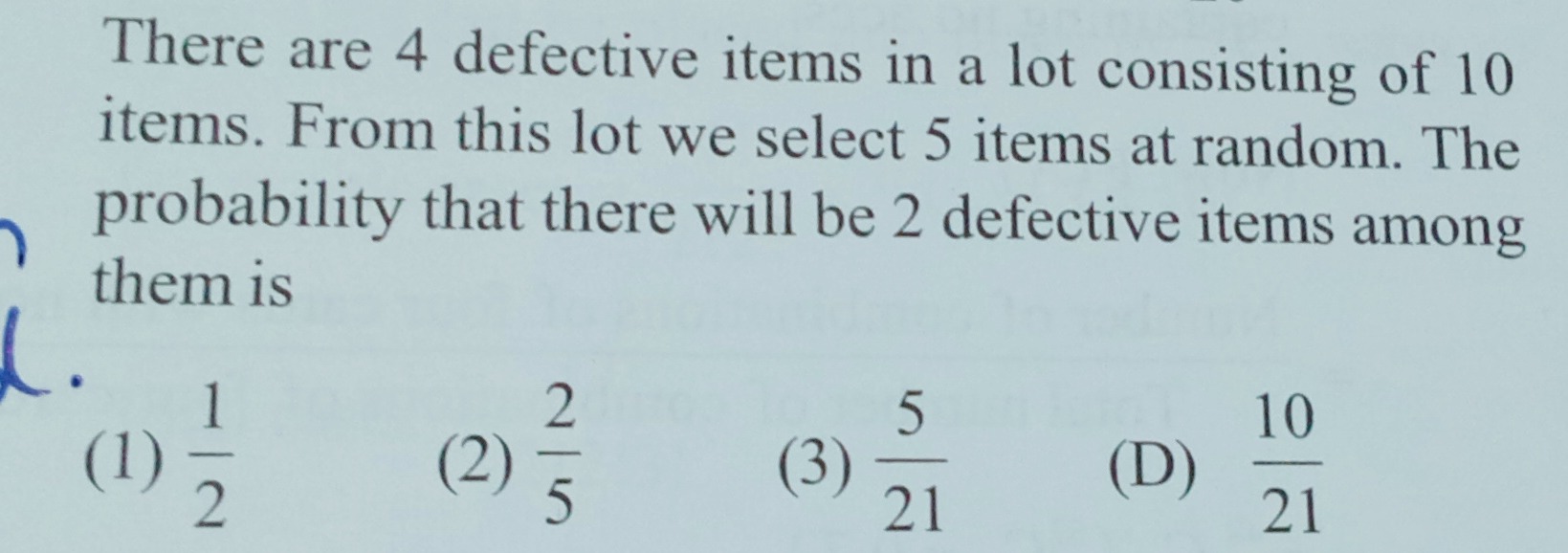Question
Question: There are 4 defective items in a lot consisting of 10 items. From this lot we select 5 items at rand...
There are 4 defective items in a lot consisting of 10 items. From this lot we select 5 items at random. The probability that there will be 2 defective items among them is

21
52
215
2110
2110
Solution
Total number of items = 10
Number of defective items = 4
Number of non-defective items = 10 - 4 = 6
We select 5 items at random from the lot of 10 items.
Total number of ways to select 5 items from 10 = (510).
We are interested in the probability that there will be exactly 2 defective items among the 5 selected items.
If there are exactly 2 defective items among the 5 selected, then the remaining 5−2=3 items must be non-defective.
Number of ways to select 2 defective items from the 4 defective items = (24).
Number of ways to select 3 non-defective items from the 6 non-defective items = (36).
The number of ways to select exactly 2 defective items and exactly 3 non-defective items is the product of the number of ways to select each type of item:
Number of favorable outcomes = (24)×(36).
The probability of selecting exactly 2 defective items among the 5 selected items is the ratio of the number of favorable outcomes to the total number of outcomes:
Probability = Total number of outcomesNumber of favorable outcomes=(510)(24)×(36)=2526×20=252120=2110.
